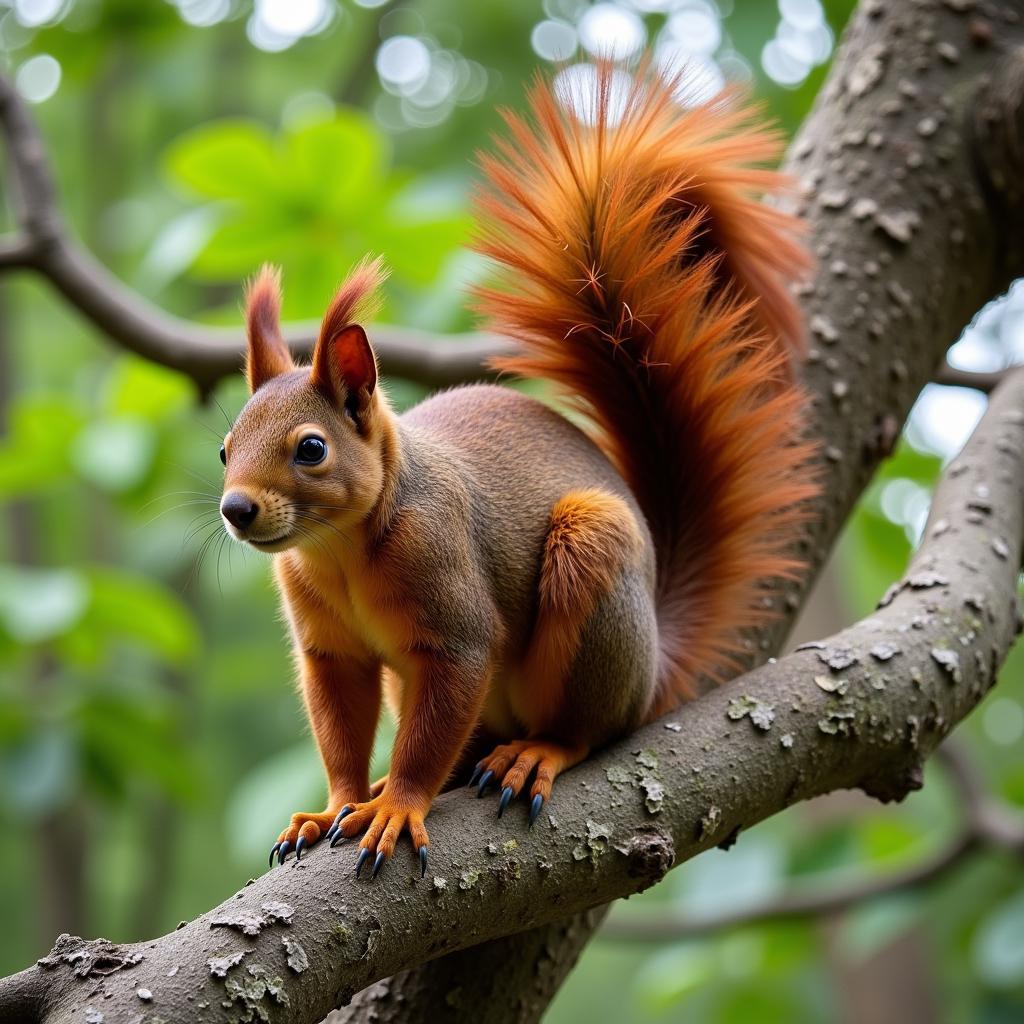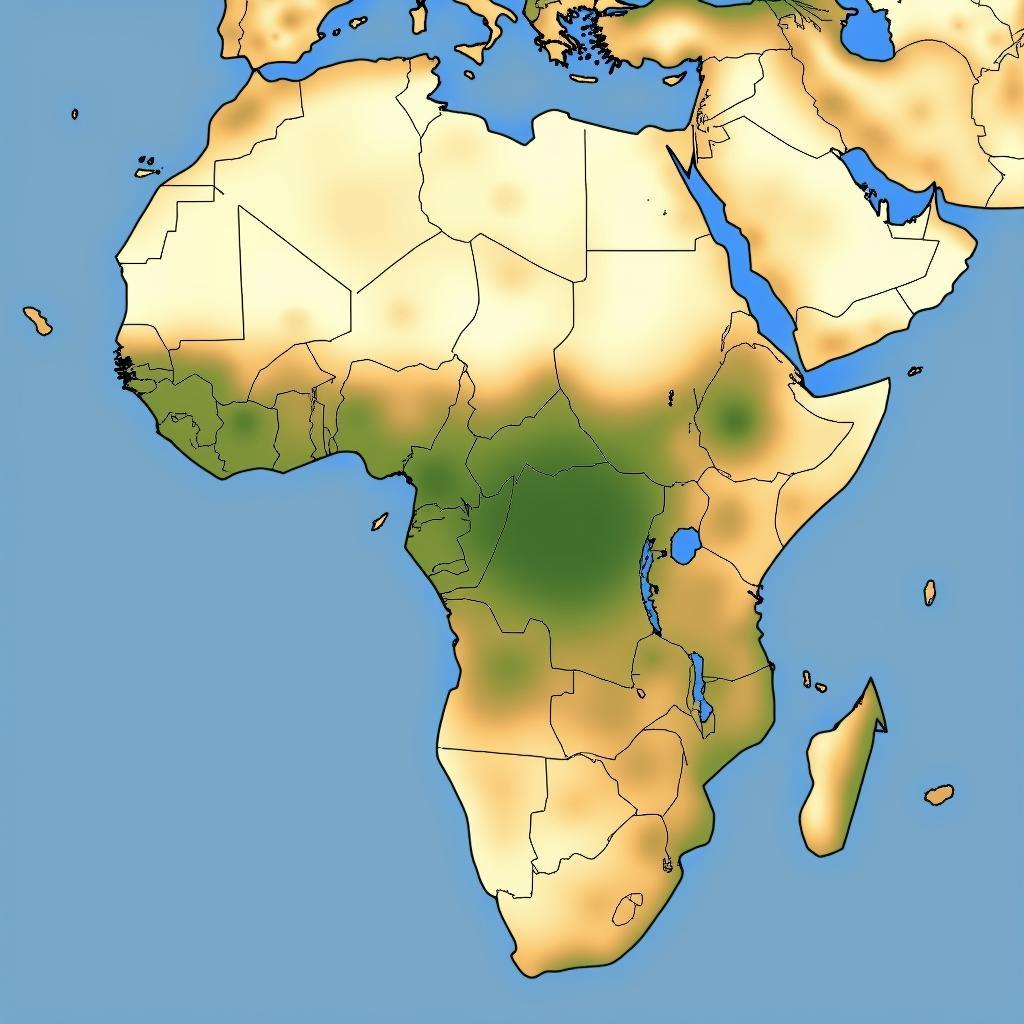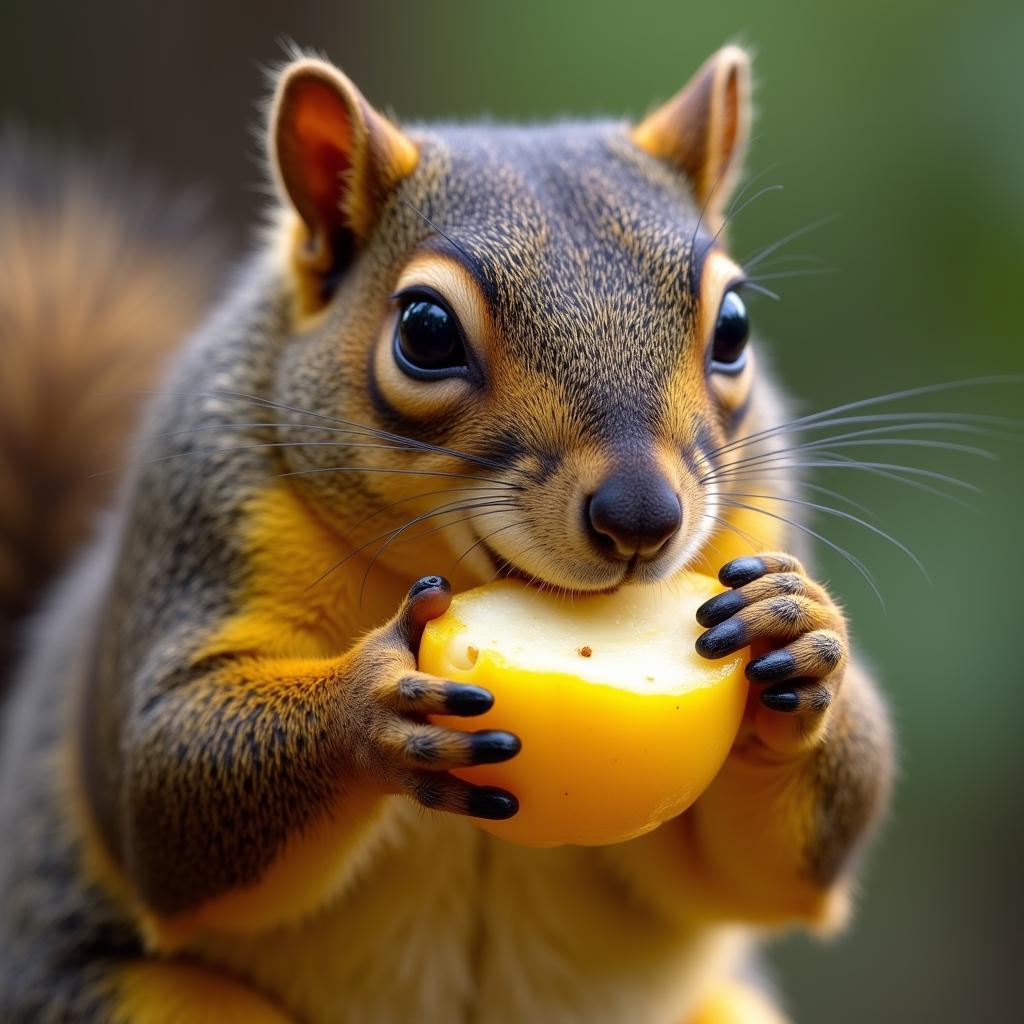Unraveling the Enchantment of the African Giant Squirrel
The African Giant Squirrel, a captivating creature of the African forests, is a sight to behold. With its striking coloration, impressive size, and intriguing arboreal lifestyle, this squirrel species has fascinated wildlife enthusiasts and researchers alike. Let’s delve into the fascinating world of this giant rodent and uncover the secrets behind its intriguing existence.
A Glimpse into the Life of a Giant
 African giant squirrel perched on a branch
African giant squirrel perched on a branch
Imagine a squirrel almost twice the size of its common gray relative, adorned with a coat of vibrant hues. That’s the African giant squirrel in all its glory. These majestic creatures can grow up to 3 feet long, from nose to the tip of their bushy tails, with the tail itself accounting for nearly half their length. Their weight can reach up to 3 pounds, making them true giants in the squirrel world.
But their size isn’t their only remarkable feature. They sport a striking combination of colors, varying between subspecies, with patches of black, white, brown, orange, and even olive green. These colors aren’t just for show; they provide excellent camouflage amidst the dappled sunlight and shadows of the forest canopy.
Habitat and Distribution: Where Giants Roam
 Map highlighting the African giant squirrel's range
Map highlighting the African giant squirrel's range
True to their name, African giant squirrels are native to the African continent, primarily inhabiting the dense rainforests of western and central Africa. Countries like Cameroon, Gabon, Ghana, and Liberia are home to these magnificent creatures. Within these lush forests, they prefer the high canopy, rarely venturing to the forest floor.
The Giant’s Diet: A Culinary Journey Through the Canopy
What does a giant squirrel eat to sustain its size? The answer lies in the rich bounty of the forest canopy. These herbivores have a diverse palate, feasting on fruits, nuts, seeds, and even tree bark. Their strong, sharp teeth are perfectly adapted for cracking open hard nuts and accessing the nutritious kernels within.
 African giant squirrel eating a piece of fruit
African giant squirrel eating a piece of fruit
Occasionally, they supplement their diet with insects and bird eggs, adding a touch of protein to their meals. Their feeding habits play a crucial role in seed dispersal, contributing to the health and diversity of the rainforest ecosystem.
Agile Acrobats: Navigating the Forest Heights
Life in the high canopy requires exceptional agility, and the African giant squirrel is a master of arboreal acrobatics. Their strong limbs and sharp claws provide a secure grip as they navigate the branches with impressive leaps and bounds.
Their large, bushy tails act as counterbalances, aiding in their balance and coordination as they move through the trees. These tails also serve as communication tools, twitching and flicking to convey messages to other squirrels.
A Day in the Life: From Dawn Till Dusk
African giant squirrels are diurnal creatures, meaning they are most active during the day. They spend their daylight hours foraging for food, socializing with other squirrels, and defending their territories. As the sun begins to set, they retreat to their dreys, cozy nests built high in the treetops, where they rest and sleep until dawn.
Conservation Status: Protecting the Giants
Despite their adaptability, African giant squirrels face threats from habitat loss due to deforestation and the bushmeat trade. However, they are currently listed as a species of “Least Concern” by the International Union for Conservation of Nature (IUCN). Continued conservation efforts are essential to ensure the long-term survival of these fascinating creatures and their rainforest home.
Conclusion: Appreciating the African Giant Squirrel
The African giant squirrel stands as a testament to the incredible diversity and wonder of the natural world. Their size, coloration, and acrobatic skills make them a captivating sight, while their ecological role as seed dispersers highlights their importance to the rainforest ecosystem. By learning more about these remarkable creatures, we can contribute to their conservation and ensure that future generations can marvel at the enchantment of the African giant squirrel.



